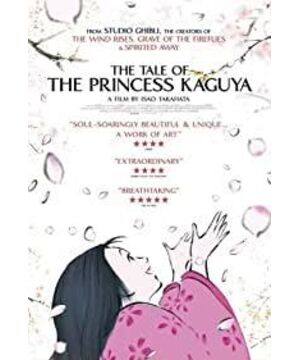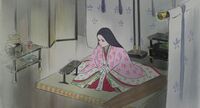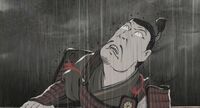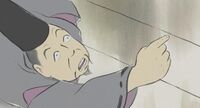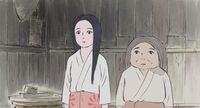The story of the "Bamboo Story" itself, like all folklore, is known for its legendary color. The film depicts the everyday life of the earth. From the beginning of Kaguya Princess being taken out of the glorious bamboo in the clear sound of the dripping sound, the film rewrites the family affection of the Taketorio couple for the little bamboo. When the tender lotus-like girl stumbled and learned to walk, Bamboo Toriwong shouted in a hoarse voice: "Come here, little princess! Come here, little princess!" Yelling and chubby Bamboo walked to his arms Inside, his gully and vicissitudes face quickly filled with warm old tears.
Such details seem like a fairy tale that does not eat human fireworks and descends into the mundane world of bamboo, crescent, plants, insects, and fish.
Hsun Takahata once said that he envied Shanghai Fine Arts Film Studio's efforts to change a style in every short story, and his own feature film even did it. "A Fairy Tale of Time" and "Grave of the Fireflies" are Ghibli's characteristic simple painting style with a touch of lead color representing memories. "My Neighbor Yamada-kun" is a character completely drawn with pencils. Ji Monogatari", he began to experiment with the classical watercolor style of the Heian era.
Of course, the progress and breakthroughs of his works go beyond the style of painting. In 1988's "Grave of the Fireflies", he engraved his heavy reflection on the war on two young faces; in 1991's "A Fairy Tale of the Years", he made the nostalgia, childhood and nostalgia so deeply rooted in the hearts of the people. In 1999, "My Neighbor Yamada-kun" deeply influenced animations with similar family themes. Since then, "Daily" and "Our Family" have emerged. And "The Story of Kaguya Princess" can see the author's ambition. He went from the present to the ancient times, from mortals to immortals, and this adaptation of Japanese classic literature is undoubtedly better than his earlier adaptations of "Anne of Green Gables" and "Sea" There is even more pressure on the adaptation of Tee.
Only under pressure, 80-year-old Takahata is able to make people feel such a miracle of change. After the leisurely and simple opening, it seems to be an oriental period drama that only talks about feelings and does not make sense. But the kind of feelings and classics that can only be played by people have unexpectedly changed and changed. In the scene in which Bamboo is desperate for men in the world, Huashang fell one after another and ran away at night in grief and indignation. The watercolor lines like smoke suddenly became violent and frantic. Bamboo's long hair was scattered in the wind and snow, like a persistent and beautiful female ghost. , the sudden change in the style of painting brings complete shock and surprise. And in the scene where Zhuzi and Shewan "elope" together, the two people who are completely down to earth suddenly break away from the shackles of the tragic reality, return to the time of playing children, fly into the air like a dream, and fly to a place where the sea and the sky are the same color, The atmosphere is outrageously romantic. It's just that after the dream, She Wan woke up and saw the old wife and the weak child standing beside him, which gave people the infinite desolation of reality.
Maybe only people with great vision and vision can see the desolation from the prosperity, so both Takahata Isao and Miyazaki are worried about the future of Ghibli. Perhaps the predecessors of Kaishan are looking for a successor who can inherit the mantle with an extremely critical eye. Except for Milin Hongchang (Arietty who borrowed things) born in 1973, there are really few. I wait for mortals, but in these beautiful animated films, I can only see hope, the hope of seeing the continuous progress and development of Japanese animation films, and the hope of seeing Ghibli's fame and reputation.
View more about The Tale of The Princess Kaguya reviews


